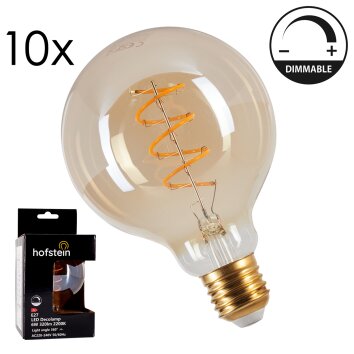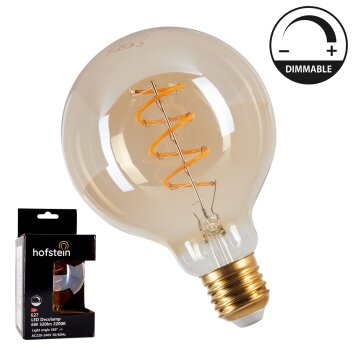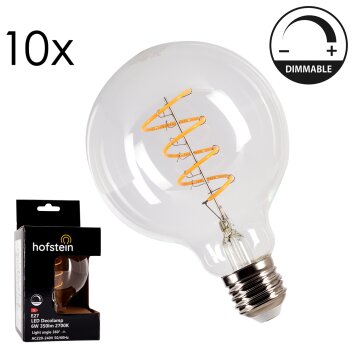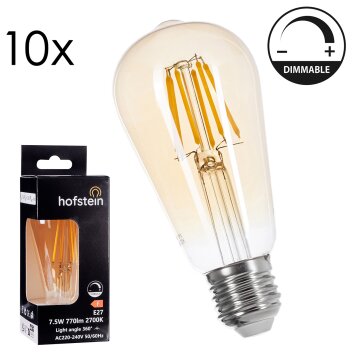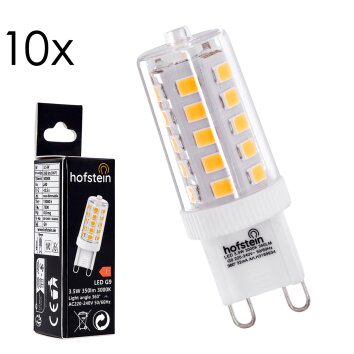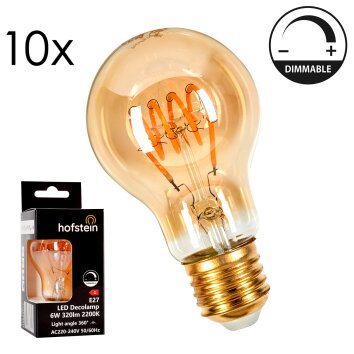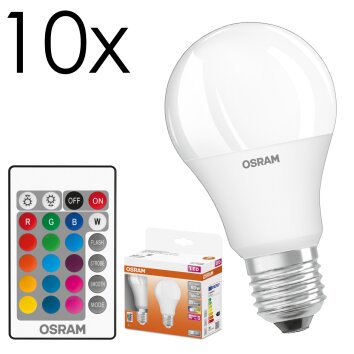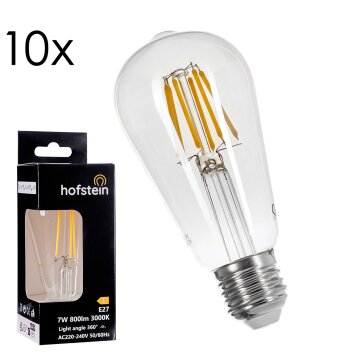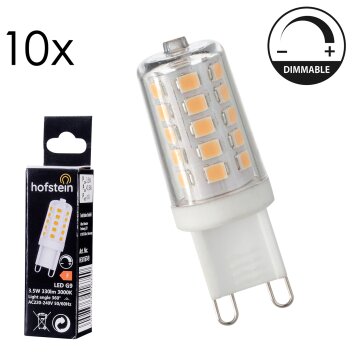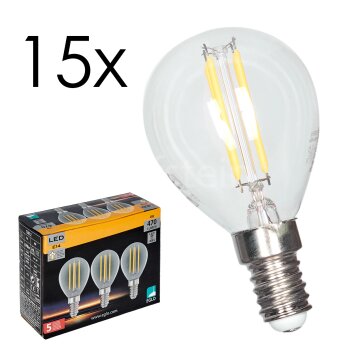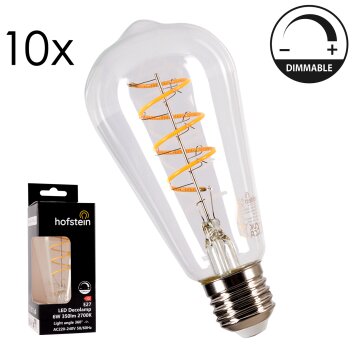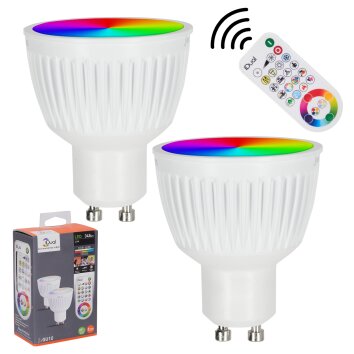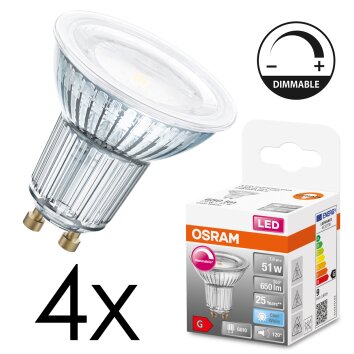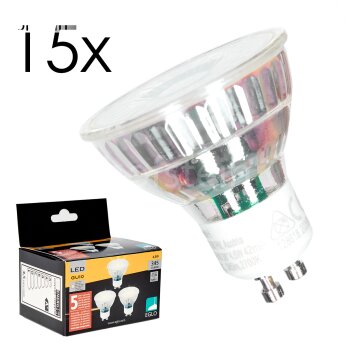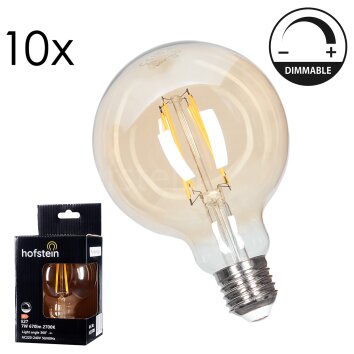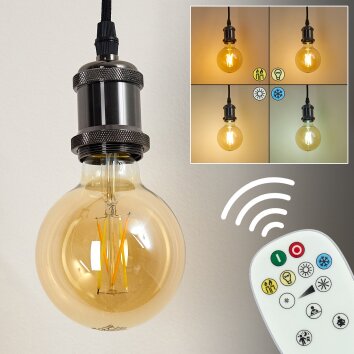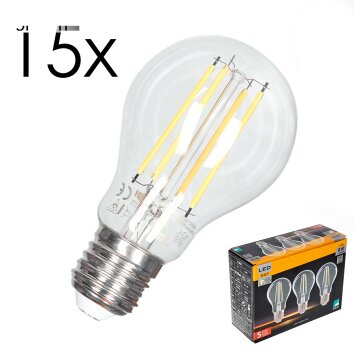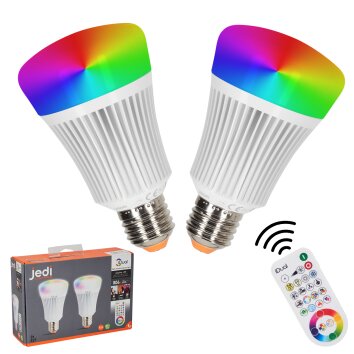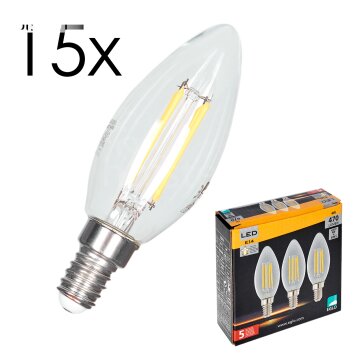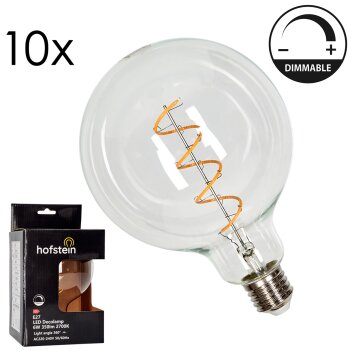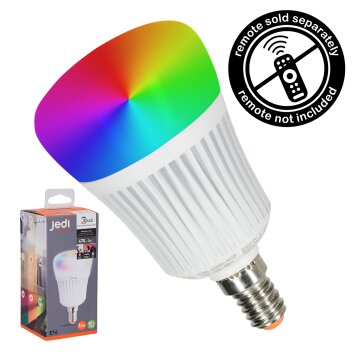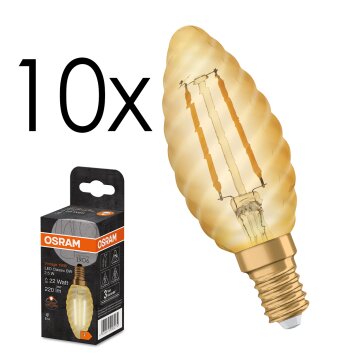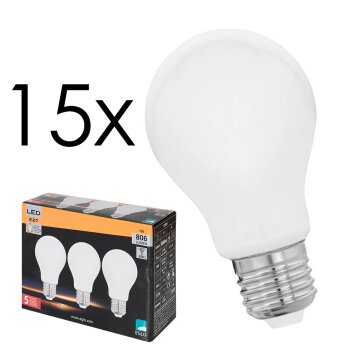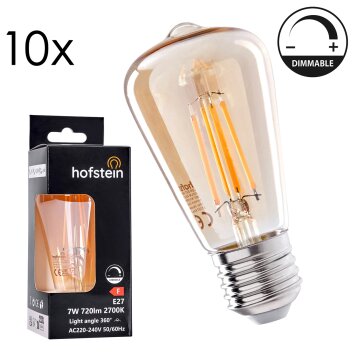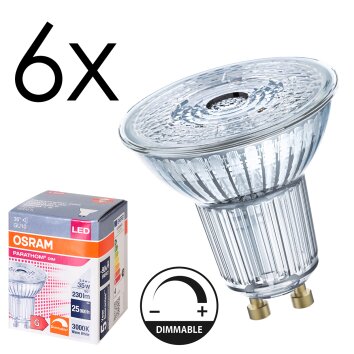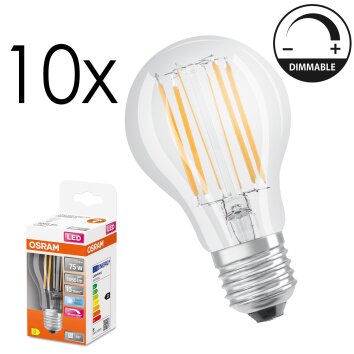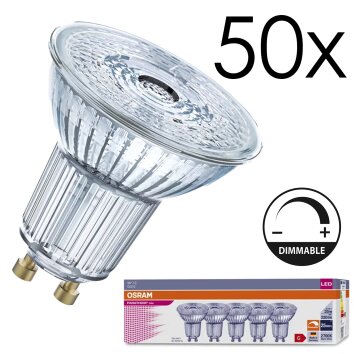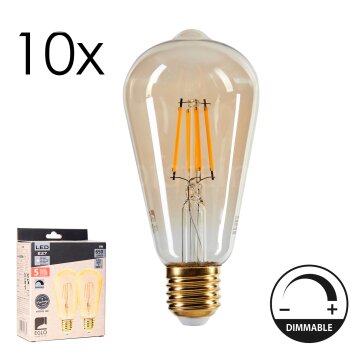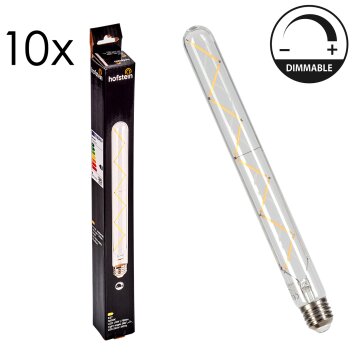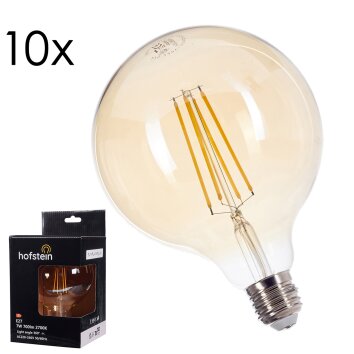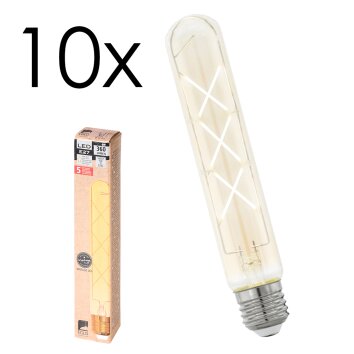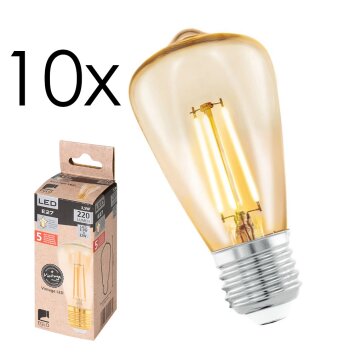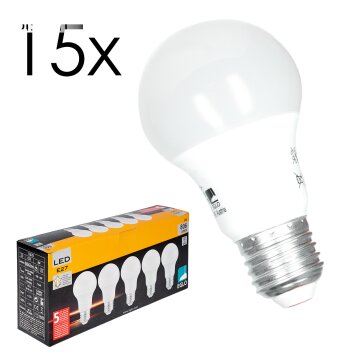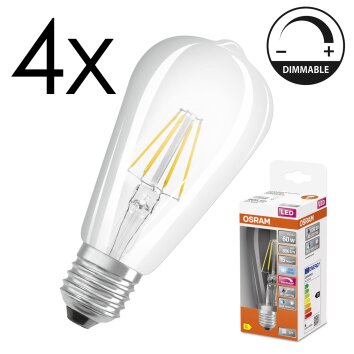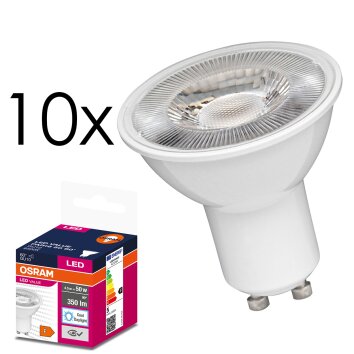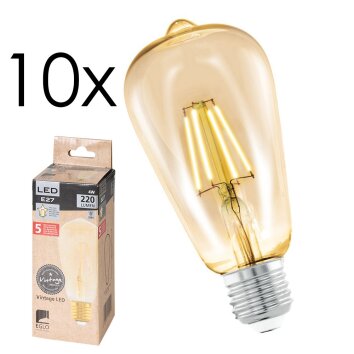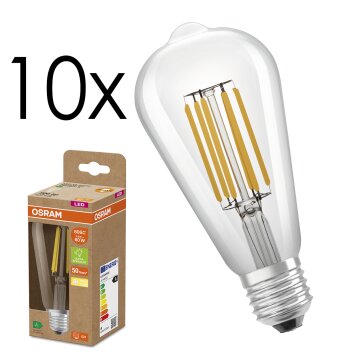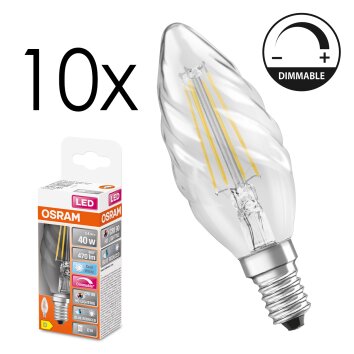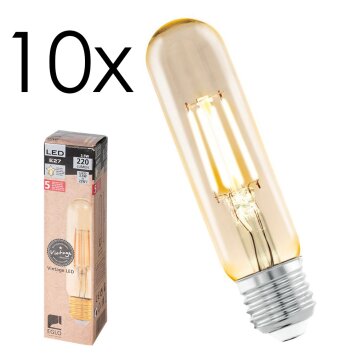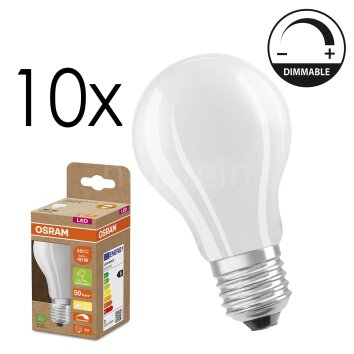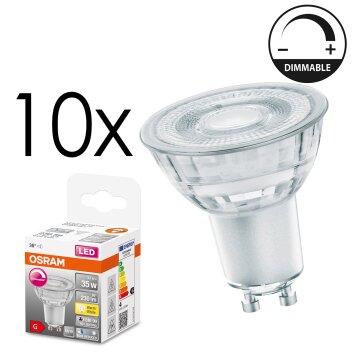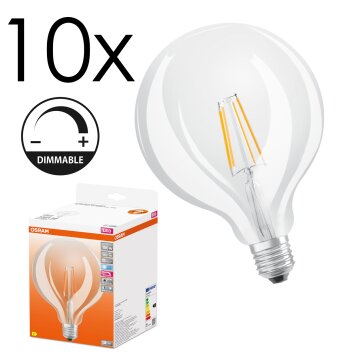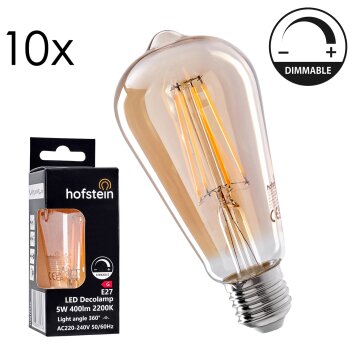LED lights are the way of the future
LED lights have established themselves a much-improved successor of the no longer available incandescent light bulbs. Also, energy-saving light bulbs and halogen light bulbs are increasingly being replaced by LED lights. Convenience: LED lights can be used with all common sockets, they can even be used in pre-existing light sockets. Whether in the classic bulb shape, reflective, super flat recessed spotlight, or elongated fluorescent light - there are the suitable LED lights for every need.
LED lights for homes and gardens
After overcoming some teething problems of LED technology, warm white living light from LED lamps is now at least as comfortable as that of halogen lamps. Through the targeted selection of materials and sophisticated production methods, the light from LEDs can be precisely configured, whether as warm-white light or a different colour. The colour temperature of a living room light is usually below 3,300 Kelvin. Special daylight white lights (from 5,300 Kelvin) are especially good for increasing concentration and performance in the work environment. Neutral white LEDs represent a middle ground and are good in hobby rooms, for example.
Dimmable and coloured light
Many LED lamps can be continuously dimmed, not just to "low-medium-high" levels. When exchanging old dimmable lights with new LEDs, however, be careful because some dimmers may be incompatible. Detailed information about dimming LED lights can be found on its packaging. If you have questions, our friendly customer support can help you.
Light emitting diodes emit typically red, green, or blue light depending on their construction. While the first LEDs could only be dimly lit and were used primarily as colour indicators, today they serve as sources of white light. One feature of LED lights that is particularly promising is their ability to change colour. The colour change is controlled either by a switch, dimmer, or remote control. Models are available with pre-set colour programmes, and the transitions are infinitely variable. Whether LED ribbons or ceiling lights there is a lot to choose from between colours and models.
LED light sockets
In addition to the well-known E14 and E27 light bulb sockets, where the light bulb is screwed in, there are also the pin based varieties of LED lights that are more common among halogen lights, such as the G4, G9, GU5.3 and GU10 varieties, for example. Whether it is E27 LEDs as a "Retrofit" in the form of classic light bulbs or a G9 LED for exchanging with halogen lights, replacing the old incandescent light bulbs with modern LEDs is not a problem. Even fluorescent light tubes can now be replaced by LEDs, like the R7s.
Advantages of LED lights
With only a few watts, LEDs can easily reach the brightness values of a 40W and 60W incandescent light bulb. The outdated incandescent lights can convert only 5% of the absorbed energy into light, the rest escapes as heat. Energy-saving lights and halogen lights are already clearly more efficient, but not they cannot compare to the excellent energy usage of LED lights. The LEDs also have the practical advantage that they hardly produce any heat and are therefore the burn risk is greatly reduced.
The improved lighting technology of today must be more carefully observed by the consumer. Brightness is no longer measured according to the power consumption in watts, but rather as the light output measured in lumens. For example, a classic 60-watt bulb produces around 720 lumens. To get an impression of the perceived brightness of the room, however, additional parameters need addressing. For example, the angle of the light from flat-shaped LEDs determines how diffused or directed the light is in the room. Also for a similar effect, LED lights will seem much brighter if the room is brightly decorated.
LED lamps shine immediately at maximum brightness when turned on, and their light is flicker-free so even strong vibrations do not affect their beautiful light. The colour rendering of LED lights is also quite convincing and is specified according to an index. Usually the index ranges from at least Ra 80; for discerning eyes or in special situations, but Ra 90 is preferred for most situations. This code specifies how natural the colours in the LED lamp look.
Another key advantage of LEDs is their long lifespan. LED lamps usually have between 20,000 and 50,000 operating hours, so they can work for several decades with normal usage. LEDs are also well designed to handle many on-off cycles, another important feature for long lasting lights. The frequent replacement of incandescent light bulbs is a thing of the past! For some LED lights, the LEDs are fixed in place, so that you cannot replace them. If the light suddenly stops shining, this is often because the replaceable transformer is defective.
LED lights for outdoors
Terrace, entrance, and gardens are also well illuminated by light emitting diodes - from outdoor wall sconces to path lights, to powerful outdoor spotlights and many more modern outdoor lights, LEDs are easily equipped. There is no shortage of LED decorative globe lights, tree lights, or pond lights. Having an LED motion sensor outdoor light will also save you operating expenses and electricity costs.
LED lights & more at the Illumination.co.uk shop
Our extensive range includes LED bulbs in all common types. In addition to market leaders such as Philips and OSRAM, many medium-sized companies in Germany and Europe are represented. Finding the right lighting for every room is no problem at Illumination.co.uk! Packages are shipped quickly upon payment receipt, and orders above £80 are shipped free of charge within the UK! You can also ask our competent customer service questions about individual light sources by phone or email.


